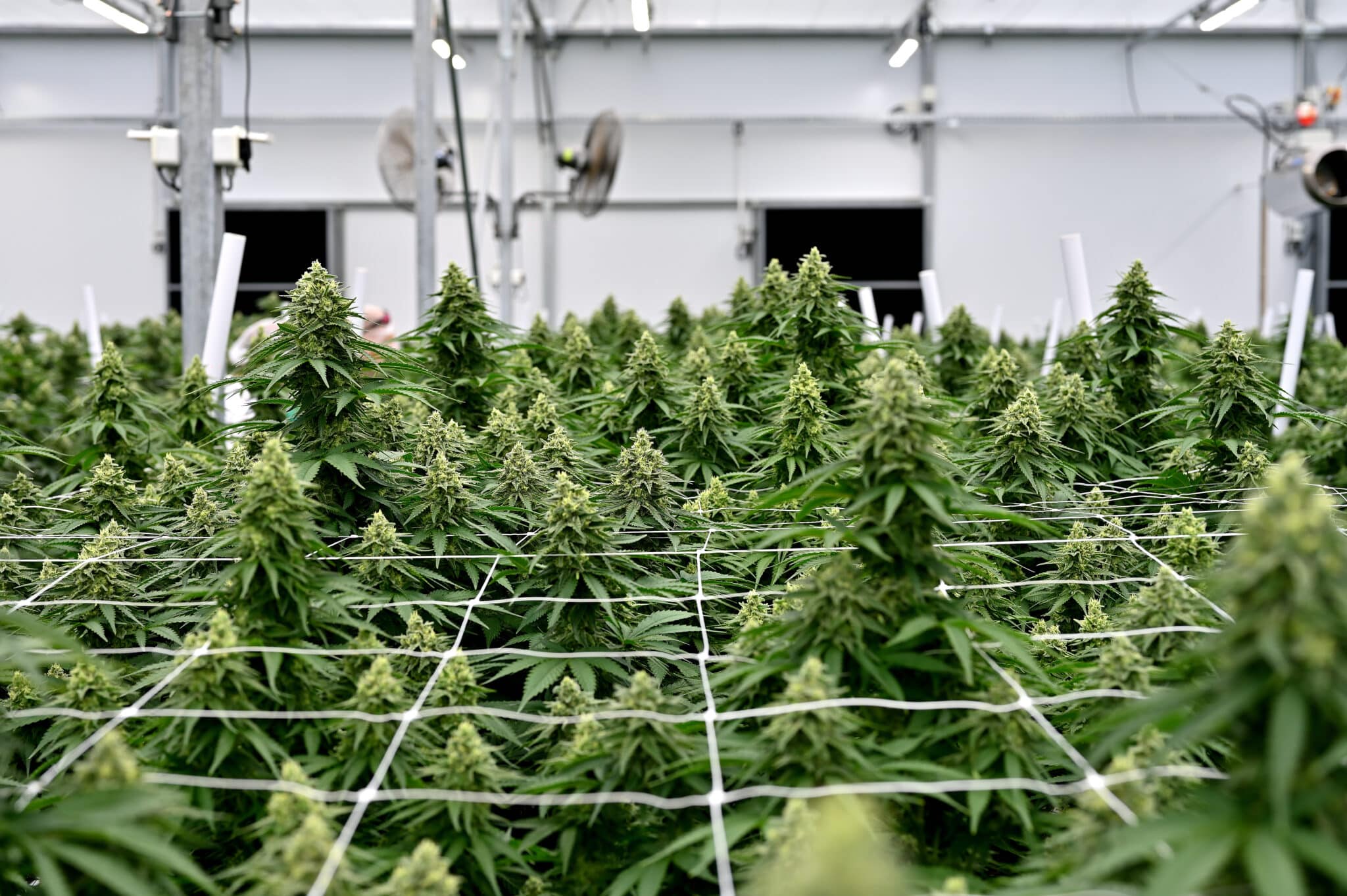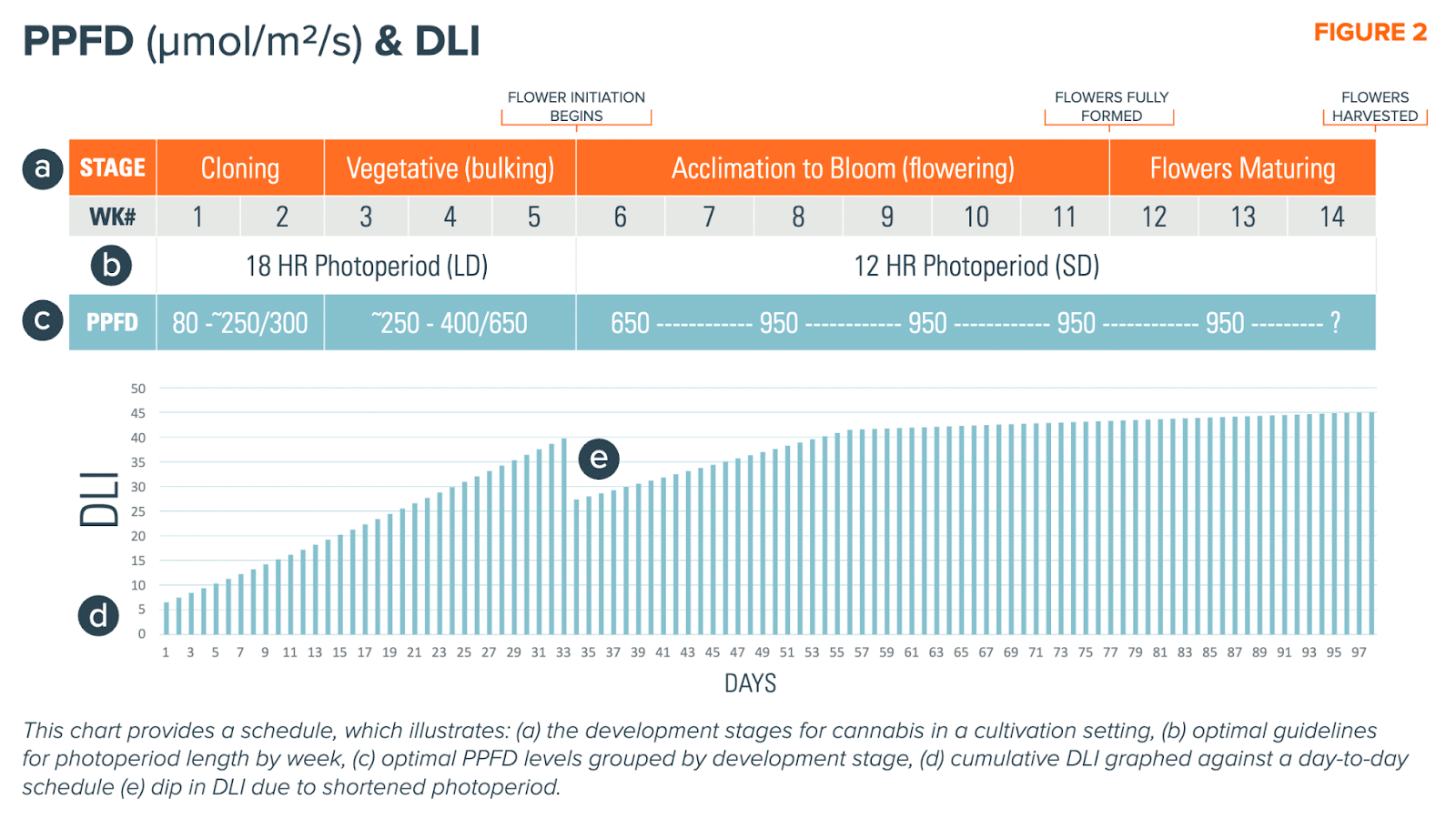
20 Feb Cannabis Cultivation: How to Prepare your Greenhouse Environment for Maximum Harvest
When light levels increase, how does a cannabis crop adapt and thrive? In this blog, you will learn the key elements needed to prepare a greenhouse environment for cannabis cultivation. In order to successfully cultivate cannabis, you will need to understand how cannabis grows, the relationship between environmental variables and how to effectively manage vapor pressure deficit (VPD) at different energy levels.
Cultivating Commercial Cannabis
Cannabis cultivation requires optimal greenhouse environments, which include proper light intensities, HVAC requirements and VPD management. For the purposes of commercial cultivation, it’s important to know that cannabis is a “high DLI, short day” flowering plant.
Daily Light Integral (DLI) is a metric which analyzes the cumulative amounts of light photons a plant’s canopy absorbs over the duration of the photoperiod. This means DLI is the accumulative measurement metric, as opposed to an instantaneous measurement, like PPFD. A photoperiod is the period of time each day an organism receives illumination. Acclimating cannabis to light is a fundamental aspect of a commercial grow environment.

Cannabis has a high DLI because it works harder and is able to use light to drive more photosynthesis than most plants. In nature, cannabis also flowers during fall-winter months due to the longer dark periods of 12-hours or more. Key takeaway – A sufficient photoperiod schedule for cannabis cultivation consists of a long 18-hour photoperiod application during beginning stages (stock production, propagation and vegetative stages) followed by a short 12-hour photoperiod during the flowering stage.
Grow tip:
If you are considering a greenhouse deployment, it is important to recognize light intensity stays constant indoors, while light intensity outdoors peaks when the sun reaches its zenith at midday.
How to Photoperiodic Schedule Cannabis Growth (graph)

Understanding the Relationship of Environmental Variables
There are a variety of environmental variables that play an essential role in cannabis cultivation.
Heating, ventilation and air conditioning (HVAC) and vapor pressure deficit (VPD) are two important variables that greatly impact the cultivation of cannabis. In this section, Dr. Nadia Sabeh, president and founder of Dr. Greenhouse Inc., provides advice on how to manage HVAC paired with high-intensity lighting and the effects of VPD on cannabis plants.
HVAC requirements change intricately when you increase light intensities in your environment. Dr. Sabeh recommends calculating the thermal conditions of a facility by addressing the facility size, heating sources and moisture sources. This analysis ultimately leads to the management of VPD, which is the measurement of the difference between saturation vapor pressure inside cells and the vapor pressure of a room’s air at a given temperature and humidity level. VPD affects how plants cool themselves by releasing moisture into the air, otherwise known as transpiration. When VPD is high, transpiration is rapid, in comparison, when VPD is low, transpiration is slow. Transpiration critically affects the diurnal balance of heat and moisture in the cultivation space (figure 3).

Grow tip:
At very low VPD levels, a film of dew can form on the plants, providing a medium for mildew and disease. At very high VPD levels, plants will use more water for transpiration, affecting irrigation and nutrient usage.
Effectively Manage VPD with Sensible and Latent Energy
Under higher light intensities, targeting a specific vapor pressure deficit is an effective strategy for controlling transpiration and overall plant deployment. However, to effectively manage VPD, it is important to understand the dynamics of the grow room environment, including how and when heat and moisture are generated. Below are the important variables Dr. Sabeh calculates to better understand VPD management.
- Sensible Energy is the form of heat that humans and plants can sense (or feel). This is measured with a traditional thermometer and is reported as “dry-bulb temperature.”
- Latent Energy is heat that is associated with phase changes between gas, liquid and solid. Latent heat is trapped by water when it evaporates and is released by water vapor when it condenses to a liquid.
- Phase Change occurs when a liquid gains energy (usually heat) and evaporates into a gas.
- Enthalpy is the total quantity of heat in a given volume. For a cultivation room, enthalpy is the sum of the sensible and latent heat.
Grow tip:
LED fixtures create less heat than high-intensity discharge lamps (HID). That often means the cultivation space needs more dehumidification and less sensible-heat cooling. Overall, Nadia estimates total electricity costs are 5-10% lower when using LED fixtures.
In summary, there are some essential elements to understand for proper cannabis cultivation. The first step is to understand the optimal growth period for a cannabis plant. Next, you will need to understand your environmental variables between HVAC and VPD. Lastly, it is important to manage VPD effectively with varying light intensities. If you’re looking to retrofit your greenhouse with LED lights, contact Fluence experts for help.


